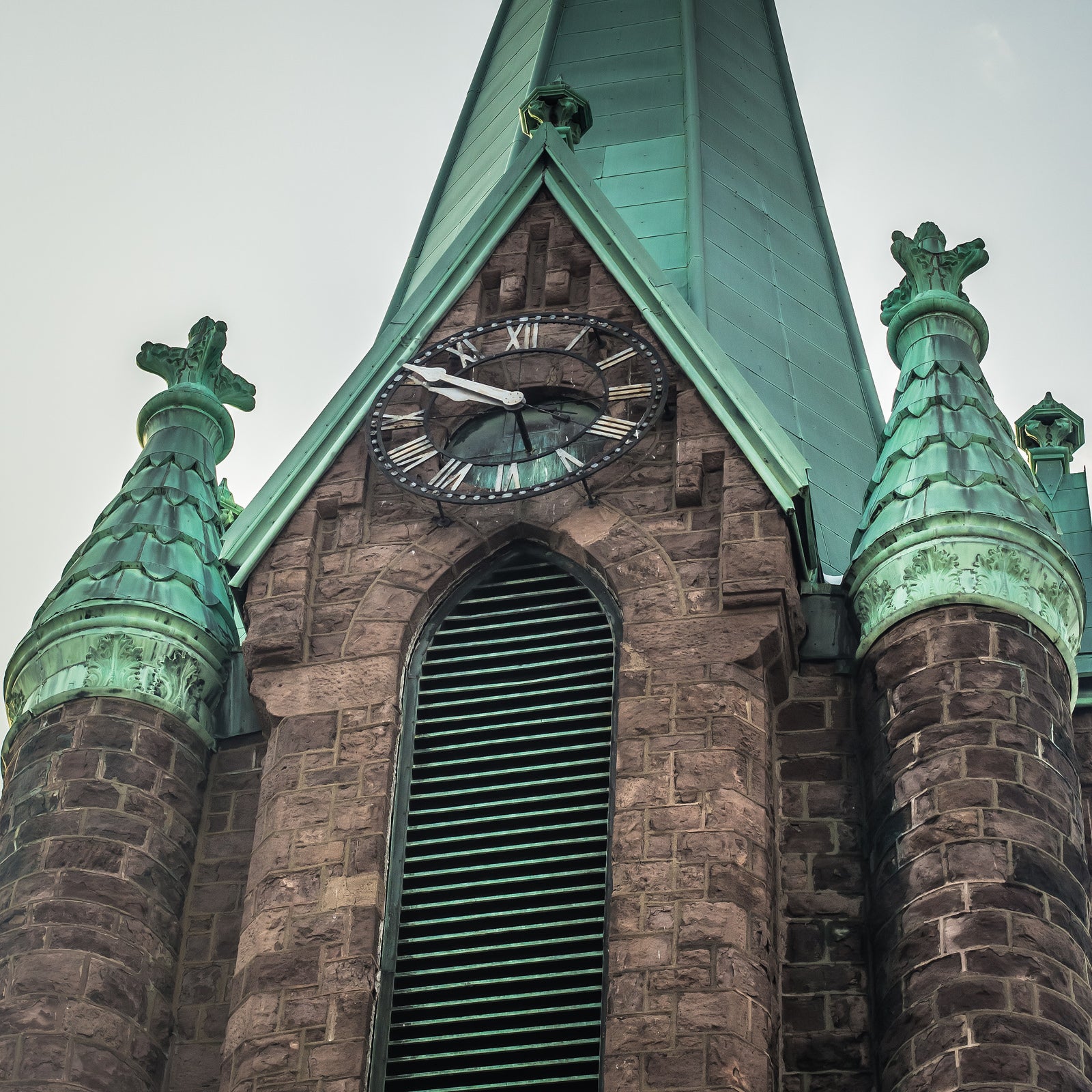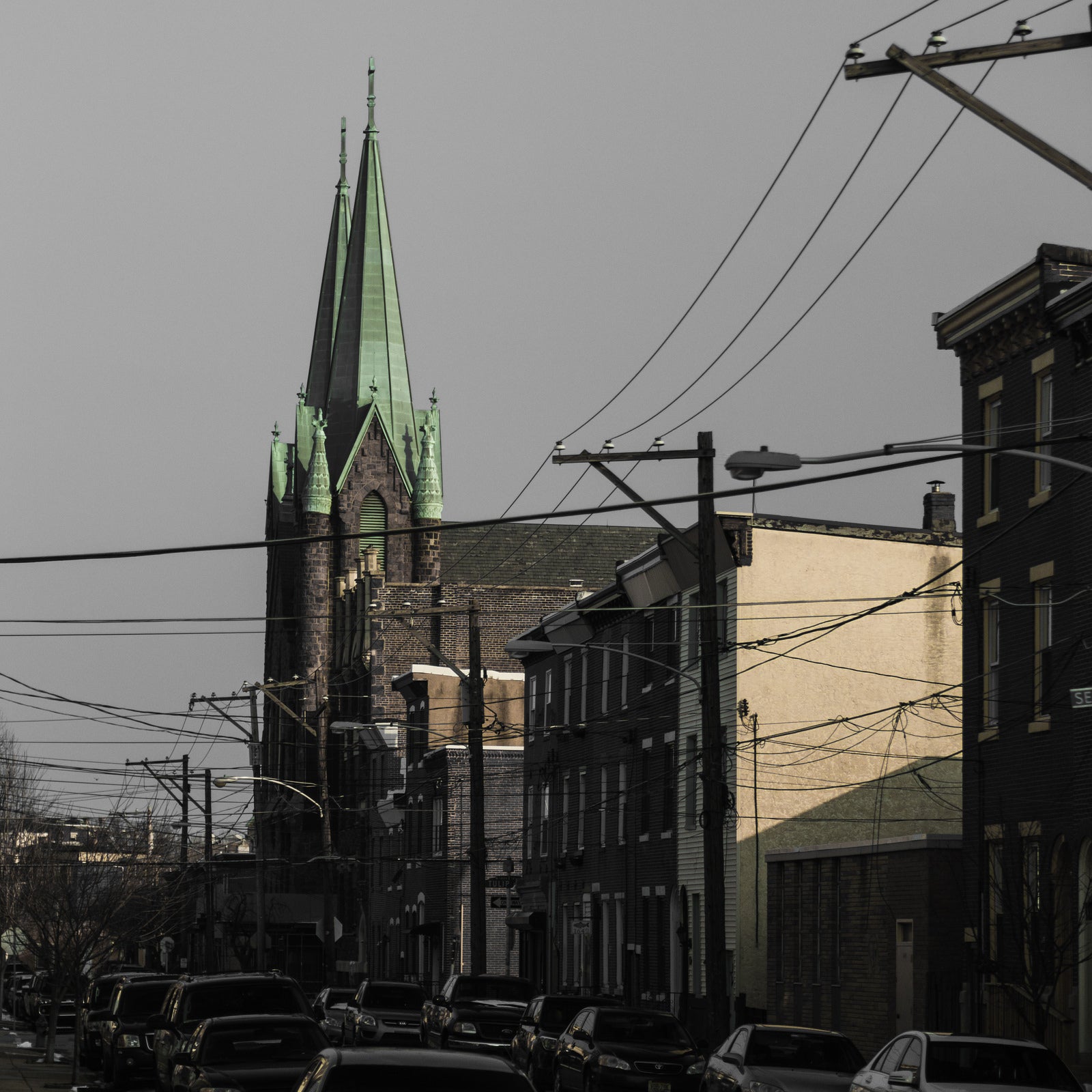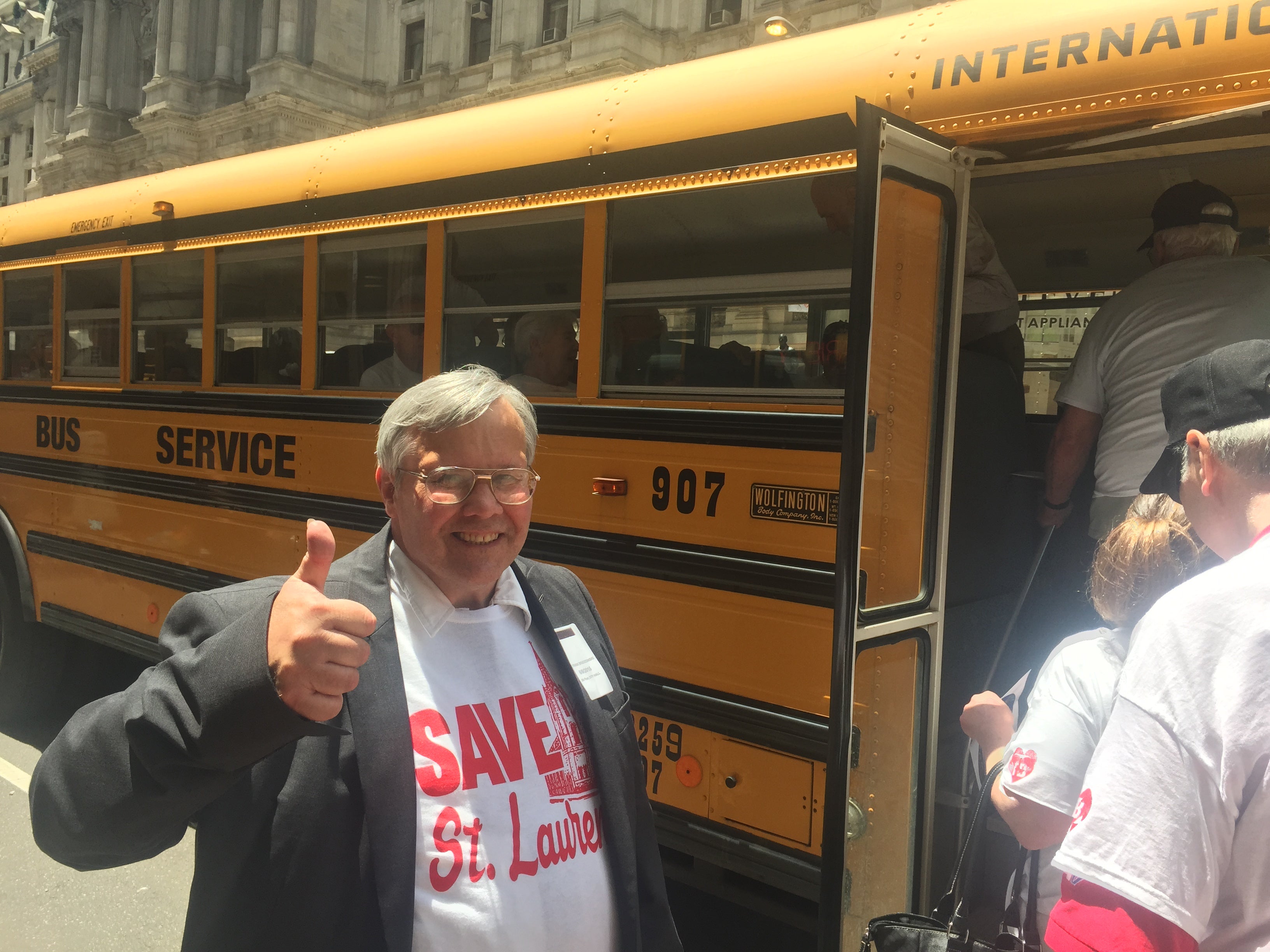Hail Mary to designate St. Laurentius historic makes headway

Supporters of St. Laurentius, a closed and deconsecrated Roman Catholic Church in Fishtown, have had the first of many prayers answered.
On Tuesday the Philadelphia Historical Commission’s Committee on Historic Designation unanimously recommended the church be considered for listing in the Philadelphia Register of Historic Places. From the moment the motion to recommend designation was uttered, the Save St. Laurentius members shoehorned in a tiny hearing room in City Hall erupted into waves of applause.
The vote took place after scant discussion among the committee members, following roughly an hour and a half of public testimony that centered on the merits of the nomination as well as a discussion of the church’s current conditions.
St. Laurentius is the work of well-known ecclesiastical architect Edwin Forrest Durang, and it was built between 1885 and 1890 – boom years for greater Kensington. But it rose in a neighborhood where anti-Catholic riots destroyed St. Michael’s Roman Catholic Church just a couple decades prior. St. Laurentius was built to serve growing Polish Catholic families in the neighborhood, and enhanced through their generosity.
According to commission staff and the designation committee, St. Laurentius meets five criteria for designation, including its architectural pedigree, distinctive character, and ties to community heritage.
Emily Cooperman, an architectural historian and preservation consultant, was among those who spoke in support of the nomination. Cooperman has studied Philadelphia churches that proliferated in booming neighborhoods in the 1880s and 1890s, including St. Laurentius.
“I think the term landmark can be sort of banal, something you just recognize that’s familiar. But in this case, these churches really hold a crucial place within the fabric of the larger historic structure of Philadelphia from this period. I think St. Laurentius is a particularly important example of that partly because of its strong statement … about the identity and the presence of the Catholic Church in this environment, particularly these Polish migrants and their place. The term landmark becomes something that resonates very deeply.”
That resonance was demonstrated by the Save St. Laurentius members who bussed into the hearing from Fishtown in matching red and white t-shirts printed with an image of the church. Many who spoke shared personal memories, stories of deep connections to the church –generations who were baptized and eulogized there – and how it enabled Polish Philadelphians to carry on family customs and traditions. Their message: Yes, a congregation is its people. But the place is their anchor, and it carries a message across the ages.

St. Laurentius’ burly brownstone exterior shows its age, and it’s topped with twin copper-tipped spires that point to the heavens from the corner of Berks and Memphis streets, visible from around the neighborhood.
“We will never ever build something like this again. We do not have the means to do it. We moreover do not have the passion that was there when this church was built,” said Susan Feenan, a Fishtown resident, architect, and parishioner of Holy Name. She appreciates St. Laurentius in part because of its powerful presence in the tight fabric of the neighborhood.
Council President Darrell Clarke’s office sent word to the commission that the councilman supports the designation, which is in his district. Clarke himself popped his head into the overcrowded hearing room and waved his hand into the room, like a papal blessing on the proceedings.
The nomination of St. Laurentius is a community-based effort that does not have the support of the Archdiocese or the nearby parish it was merged into, Holy Name of Jesus. Holy Name announced this spring that it intended to demolish St. Laurentius.
Since 2013, several rounds of engineering inspections at St. Laurentius by the firm O’Donnell & Naccarato revealed issues with the condition of the masonry, explained lead engineer Nick Cinalli. The brownstone cladding is delaminating and deteriorating, he said, and testing in select areas revealed the brownstone skin is not tied to the structural stone wall within. Further exploration would be needed to determine just how compromised the structure is and what repairs would cost.
The Archdiocese of Philadelphia, Cinalli said, asked O’Donnell & Naccarato for a menu of options for how to treat the issues at St. Laurentius alongside ballpark estimates for the work: A total repair could clock in at $2.5 million- $3 million; Removal of the two towers could run about $2 million; stabilization of the towers could cost up to $1.7 million, and a contractor quoted $1 million for total demolition.

Demolition permits have been filed, but Philadelphia’s preservation law creates a demolition delay when a nomination to the Philadelphia Register of Historic Places is under consideration.
In her motion to recommend designation of St. Laurentius, committee member Janet Klein noted that the designation committee is only responsible for hearing the merits of the property’s significance. Building safety concerns would still be under the purview of the Department of Licenses and Inspections. She also noted that should the building be officially designated, Holy Name would have to go through the preservation hardship appeals process to demolish the property. That process, which Holy Name’s lawyer Michael Phillips said it would pursue, could buy the building’s supporters time.
The nomination of St. Laurentius is part of a two-pronged Hail Mary: Supporters see local designation as a way to buy time for the church by preventing demolition, at least in the near term. After designation, demolition would only be permitted after a hardship finding at the Historical Commission. Meantime they hope an alternative future for the church can be discerned.
Save St. Laurentius members have sought recourse from the Vatican to rescind the Archdiocese of Philadelphia’s decision last fall to deconsecrate the church. The Vatican recently rejected their appeal though the written decision has not yet been received said longtime St. Laurentius member John Wisniewski. But, he said, they are preparing an appeal of that decision to the Vatican’s highest court, the Apostolic Signatura.
The Historical Commission is expected to take up the nomination of St. Laurentius at its July meeting.
WHYY is your source for fact-based, in-depth journalism and information. As a nonprofit organization, we rely on financial support from readers like you. Please give today.



